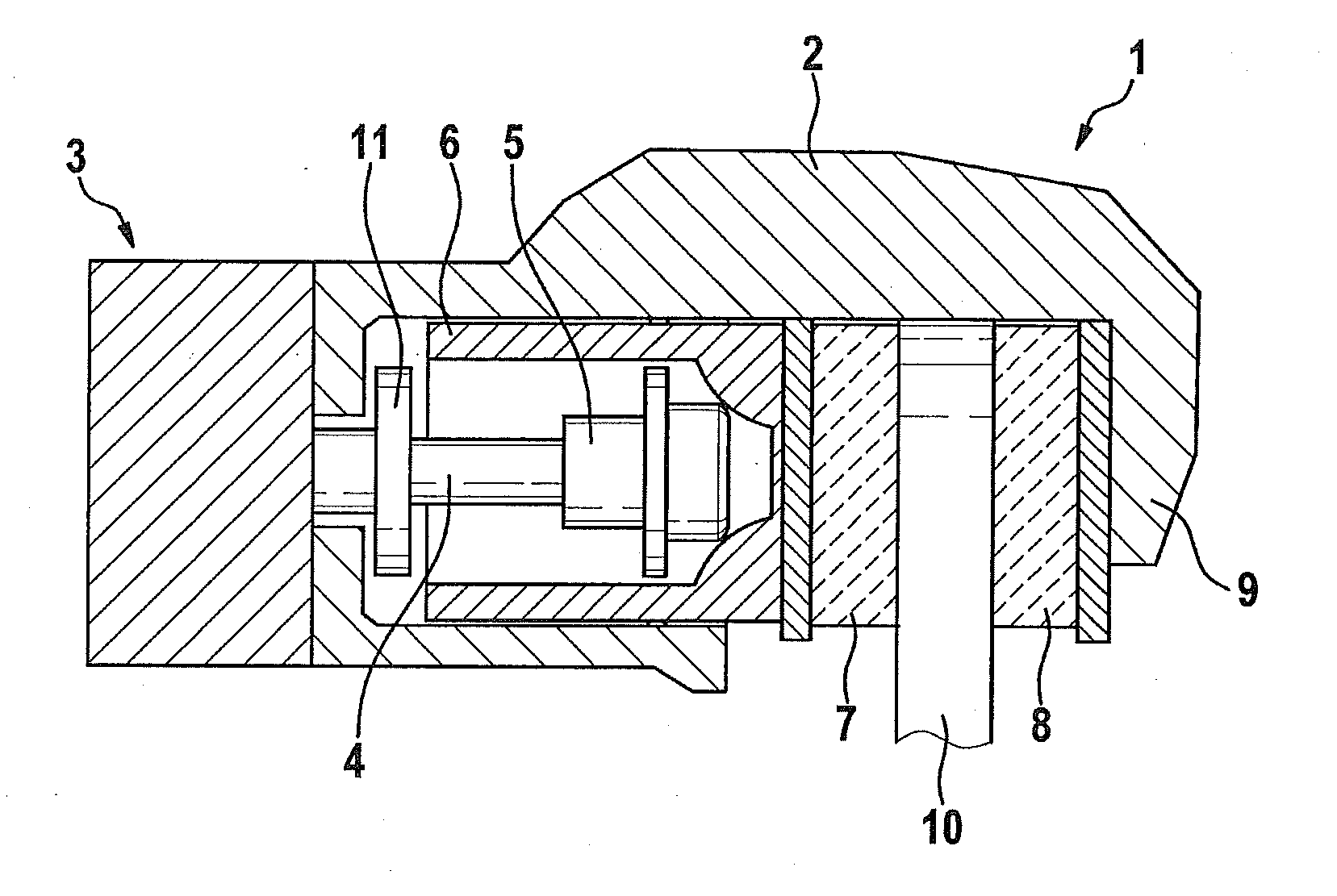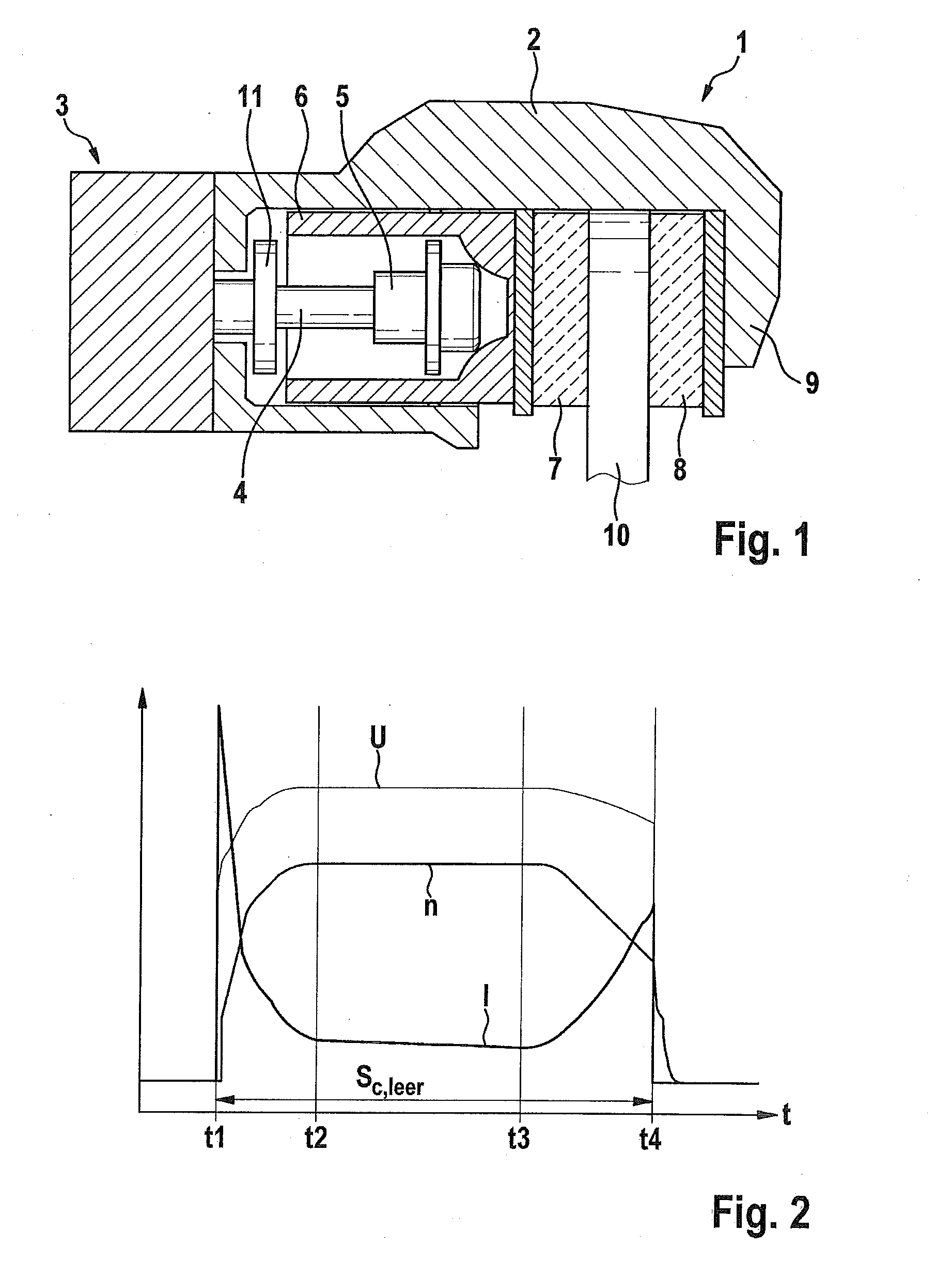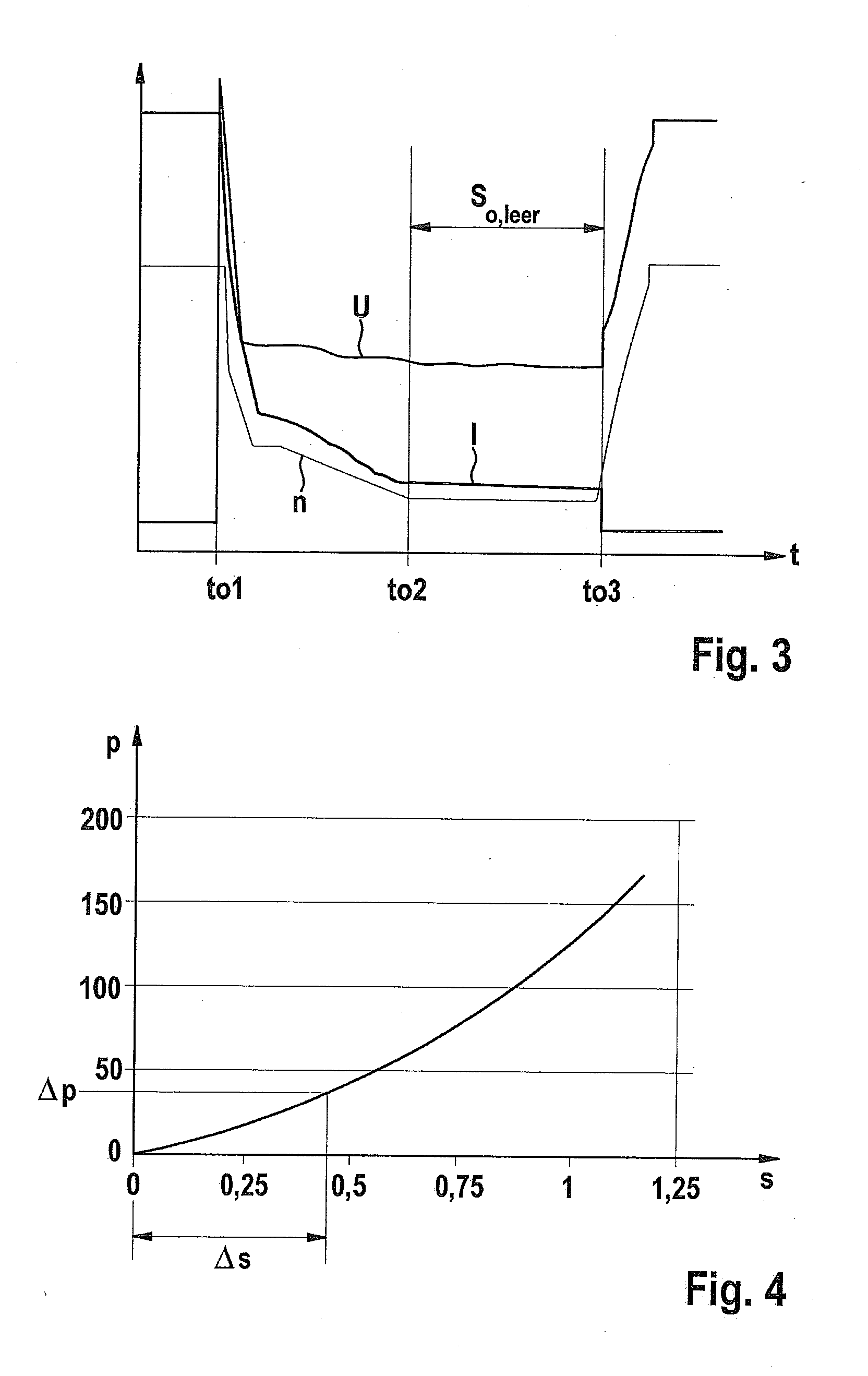Method for setting the actuating force applied by a parking brake
a technology of parking brake and clamping force, which is applied in the direction of braking systems, instruments, analogue processes for specific applications, etc., can solve the problems of excessively low clamping force level to be set, reduced actuation of electric actuators, and insufficient reliability of hydraulic pressure information in the system. , to achieve the effect of sufficient degree of accuracy
- Summary
- Abstract
- Description
- Claims
- Application Information
AI Technical Summary
Benefits of technology
Problems solved by technology
Method used
Image
Examples
Embodiment Construction
[0021]FIG. 1 shows an electromechanical parking brake 1 for holding a vehicle at a standstill. Parking brake 1 includes a brake caliper 2 having a clamp 9 which grips a brake disk 10. As the actuator, parking brake 1 has an electric motor as brake motor 3, which rotationally drives a spindle 4 on which a spindle component 5 is rotatably mounted. When spindle 4 rotates, spindle component 5 is axially adjusted. Spindle component 5 moves within a brake piston 6, which is the carrier of a brake pad 7 which is pressed against brake disk 10 by brake piston 6. Another brake pad 8, which is fixedly held in place on clamp 9, is located on the opposite side of brake disk 10.
[0022]During a rotational movement of spindle 4, spindle component 5 may move axially forward within brake piston 6 in the direction of brake disk 10 or, in a reversed rotational movement of spindle 4, it may move axially backward until it reaches a stop 11. To generate a clamping force, spindle component 5 strikes the inn...
PUM
 Login to View More
Login to View More Abstract
Description
Claims
Application Information
 Login to View More
Login to View More - R&D
- Intellectual Property
- Life Sciences
- Materials
- Tech Scout
- Unparalleled Data Quality
- Higher Quality Content
- 60% Fewer Hallucinations
Browse by: Latest US Patents, China's latest patents, Technical Efficacy Thesaurus, Application Domain, Technology Topic, Popular Technical Reports.
© 2025 PatSnap. All rights reserved.Legal|Privacy policy|Modern Slavery Act Transparency Statement|Sitemap|About US| Contact US: help@patsnap.com



